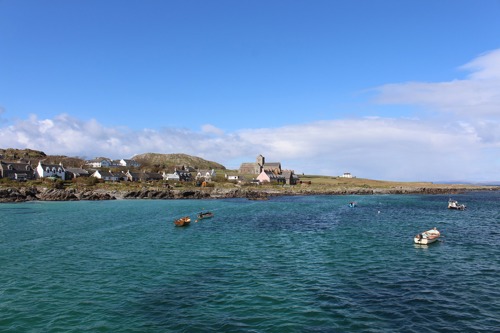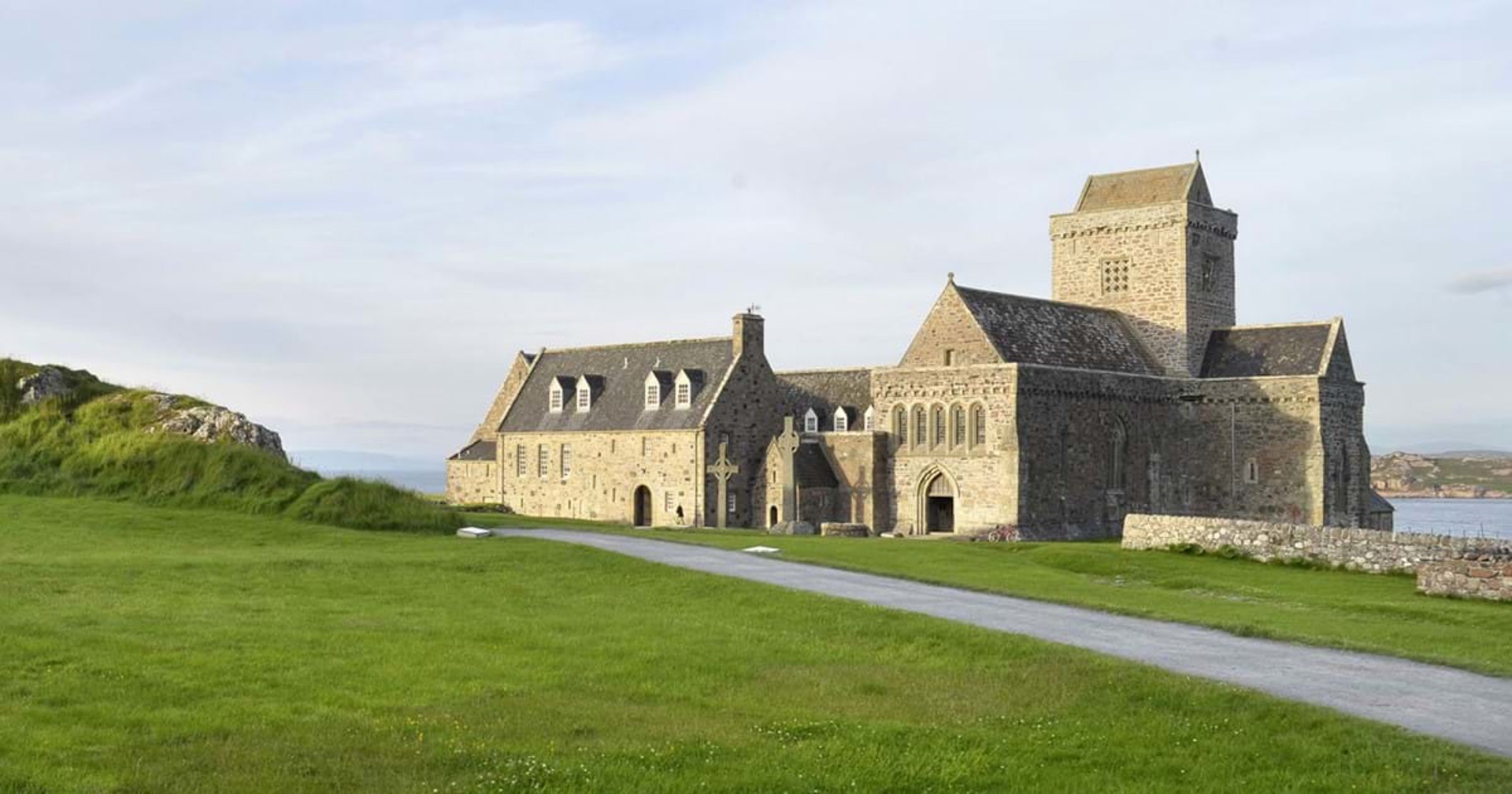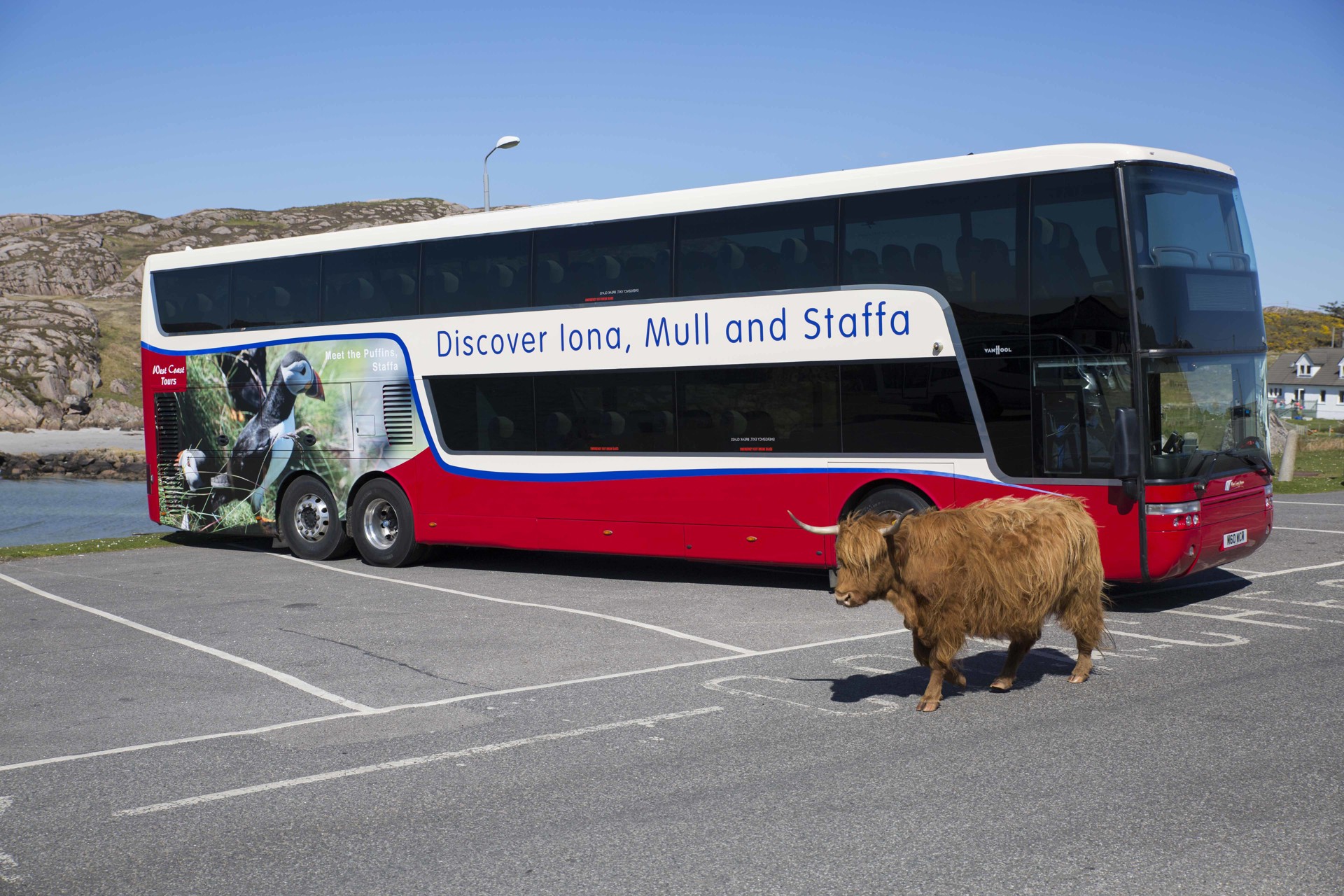Iona’s special place in Christian history
Iona is a tiny Hebridean island sitting less than a mile off the south western-most tip of Mull in Argyll. It’s a beautiful place to visit, with stunning beaches and wildlife galore. But it’s not just the natural beauty that draws people to Iona; it’s a place of pilgrimage for many. Iona is one of the oldest and most important religious centres in Western Europe and played a key role in the spread of Christianity throughout Scotland and beyond.

The Story of Iona
The story began in 563 AD when St Columba, with twelve followers, landed at the south end of the island – now known as St Columba's Bay – to establish a monastery. It became one of the most influential in the British Isles, sending missionaries to northern Britain to convert people to Christianity. Little remains of Columba’s original monastery (the abbey we see today belongs to a later era), but you can still see the vallum (earthen bank) that enclosed the holy site. Inside would have been a settlement with a timber church, surrounded by huts for the monks to live and work in, and small cells for prayer.
Columba died in 597 AD and it’s thought he was buried below the small, stone chapel shrine which is attached to the front of the abbey. The monastery became a centre of pilgrimage. It also became a leading centre for learning and art. Holy texts from around Europe were copied there and poetry flourished. Wealthy pilgrims brought money to the monastery, and in the 8th century some of the finest Dark Age works of art were created to glorify Columba. The Book of Kells, now held in Trinity College Dublin, was probably crafted on Iona along with four Celtic high crosses (St John’s, St Matthew’s, St Martin’s and St Oran’s). Three can now be seen in the Abbey Museum, while one is still in place.
By the 9th century the monastery had been abandoned. A series of Viking raids, including one in 806 AD when 68 monks were slain at Martyrs’ Bay, saw to that. After the monastery’s treasures had been plundered many times, in 849 Columba's relics were removed and divided two ways between Scotland and Ireland. The monks too eventually vacated the island and left behind a deserted monastery complex.

But the story of Iona didn’t end there. As the Norse domination of the west coast of Scotland advanced, Iona became part of the Kingdom of the Isles and the Kingdom of Alba in the later 9th century. In around 1200 AD, Raghnall, son of Somerled, King of the Isles, built the Benedictine abbey that we see today. The nunnery was founded at the same time as the abbey and is one of the best-preserved medieval nunneries in Britain. Much of the ruins date from the 14th century and you can still see some of the fine carved details on the stonework.
The abbey remained an important place of worship and pilgrimage until the Reformation in 1560, after which it fell into disuse. It lay in ruins until 1938, when the Iona Community revived the abbey’s long tradition of work, worship and teaching.
Whether you come to Iona as a pilgrim, to enjoy its beaches or just to escape the hustle and bustle of everyday life, you’re sure to experience the special qualities of peace and tranquility that pervade the island. You’ll also discover more about this small island’s big place in in history.


